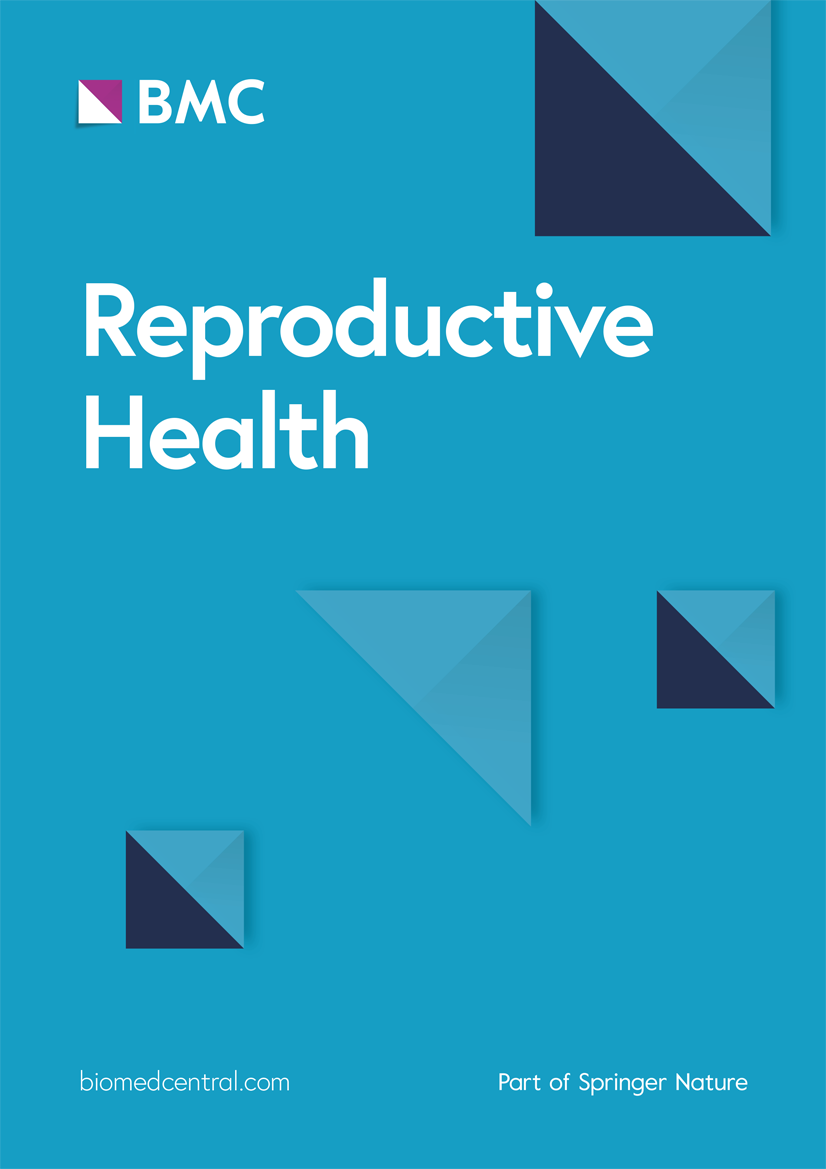Evidence on sexual and reproductive health service delivery during and post COVID-19: a multi-country facility assessment – BioMed Central

Report on Sexual and Reproductive Health Services During the COVID-19 Pandemic
Alignment with Sustainable Development Goals (SDGs)
This report details a multi-country study assessing the impact of the COVID-19 pandemic on sexual and reproductive health (SRH) services. The research is fundamentally aligned with the United Nations Sustainable Development Goals (SDGs), primarily focusing on:
- SDG 3: Good Health and Well-being, specifically Target 3.7, which aims to ensure universal access to sexual and reproductive health-care services, including for family planning, information and education, and the integration of reproductive health into national strategies and programs.
- SDG 5: Gender Equality, particularly Target 5.6, which seeks to ensure universal access to sexual and reproductive health and reproductive rights.
The study provides critical evidence on the resilience of health systems and identifies barriers to essential SRH services, thereby informing strategies to protect and advance progress on these global goals during and after public health crises.
Research Methodology
Study Design and Phasing
A repeated cross-sectional, mixed-methods design was employed to evaluate the availability, readiness, and utilization of SRH services. Data collection was structured around two distinct time points to facilitate a comparative analysis aligned with SDG monitoring principles:
- During Pandemic: A period corresponding to high community transmission (WHO pandemic phases 3–4).
- Post-Pandemic: A recovery phase with lower transmission (WHO pandemic phases 0–2), conducted approximately 9 to 12 months later.
Geographic Scope and Global Partnerships (SDG 17)
In line with SDG 17 (Partnerships for the Goals), the research was conducted in collaboration with Ministries of Health across nine countries, reflecting diverse geographic and economic contexts. This partnership approach strengthens global health security and promotes shared learning. The participating countries were:
- Brazil
- Burkina Faso
- China
- England
- Ghana
- Italy
- Kenya
- Pakistan
- Thailand
Study sites were selected within regions most affected by COVID-19 to understand and address health inequalities, a core principle of SDG 10 (Reduced Inequalities).
Facility and Participant Selection for Equitable Access (SDG 3 & 5)
Health facilities were purposively selected based on their capacity to provide a core set of SRH services essential for achieving SDG 3 and SDG 5. Selection criteria included the provision of:
- Contraception
- Abortion and postabortion care
- Sexually transmitted infection (STI) management
- Support for survivors of gender-based violence (GBV)
The study population included women and their partners seeking SRH services, alongside healthcare providers. Qualitative findings from China, Brazil, and Kenya are presented, utilizing purposive sampling to achieve thematic saturation and capture in-depth perspectives on barriers to care.
Data Collection and Instruments
Quantitative Data Collection Framework
Data were collected using two standardized WHO questionnaires to assess progress toward SDG targets related to health service delivery.
- Client Questionnaire: Administered to 4,346 women, this tool gathered data on demographics and access to critical SRH services, including contraception use, abortion, STI screening, and GBV care. The final analysis focused on 2,292 clients from seven countries.
- Facility Assessment Questionnaire: Completed by a knowledgeable provider at each of the 48 participating clinics, this instrument evaluated facility readiness across five modules crucial for a resilient health system (SDG 3):
- Health Systems
- Family Planning
- Abortion Services
- STIs
- GBV
Qualitative Data Collection for Contextual Understanding
To understand the human dimension of service disruptions and contribute to people-centered health systems (SDG 3), qualitative data were collected via in-depth interviews (IDIs) and focus group discussions (FGDs). These explored:
- Barriers to accessing SRH services
- Health system adaptations and innovations (e.g., telemedicine)
- Psychosocial impacts on clients and providers
Key country-specific findings highlighted challenges to achieving health equity, such as healthcare worker burnout in Kenya, fear of seeking care in Brazil, and access barriers alongside digital innovations in China.
Data Management, Analysis, and Ethical Framework
Sample Size and Data Management
Country-specific sample size calculations were conducted based on WHO scenario estimations. The study was designed to document service delivery trends and identify gaps to inform policy, rather than to generate statistically powered comparisons. Data were managed securely using electronic databases, including the OpenClinica platform.
Data Analysis for Policy and SDG Monitoring
A dual analytical approach was used to generate evidence for strengthening health systems.
- Quantitative Analysis: Descriptive statistics and multilevel logistic regression models were used to assess SRH service trends, adjusting for client and facility characteristics. This analysis helps identify disparities in access and quality, informing targeted interventions to meet SDG 3 and SDG 5.
- Qualitative Analysis: Thematic content analysis and grounded theory approaches were employed to analyze transcripts. This method identified key themes regarding service disruptions, barriers, and adaptations, providing actionable insights for building more resilient and equitable health systems.
Ethical Framework
The study adhered to the highest ethical standards, reflecting the human rights-based approach of the SDGs. All participants provided informed consent, and rigorous safeguards for anonymity, privacy, and confidentiality were maintained. Ethical approval was obtained from the WHO Ethics Review Committee and relevant national bodies in each participating country, ensuring the protection and well-being of all participants.
Analysis of Sustainable Development Goals in the Article
1. Which SDGs are addressed or connected to the issues highlighted in the article?
- SDG 3: Good Health and Well-being: The article’s central theme is the assessment of sexual and reproductive health (SRH) services, which is a core component of ensuring healthy lives and promoting well-being for all at all ages. It directly investigates the availability, readiness, and utilization of essential health services like contraception, abortion, and STI management during a global health crisis.
- SDG 5: Gender Equality: The study focuses on services predominantly used by women and addresses issues that are critical to gender equality. It explicitly includes the assessment of support for survivors of gender-based violence (GBV) and access to SRH services, which are fundamental to empowering women and girls and ensuring their bodily autonomy.
- SDG 16: Peace, Justice and Strong Institutions: The article examines the capacity and performance of health facilities (institutions) to deliver essential services during the COVID-19 pandemic. The facility assessment questionnaire evaluates clinic performance, readiness, and the availability of policies and infrastructure, which relates to the development of effective and accountable institutions.
- SDG 17: Partnerships for the Goals: The study itself is an example of a multi-stakeholder partnership. It was conducted across nine countries (Brazil, Burkina Faso, China, England, Ghana, Italy, Kenya, Pakistan, and Thailand) in collaboration with the World Health Organization (WHO) and respective Ministries of Health, demonstrating a global partnership to share knowledge and address a common challenge.
2. What specific targets under those SDGs can be identified based on the article’s content?
- Target 3.7: “By 2030, ensure universal access to sexual and reproductive health-care services, including for family planning, information and education, and the integration of reproductive health into national strategies and programmes.” The article directly addresses this target by assessing the availability and utilization of a “core set of SRH services, including contraception, abortion and postabortion care, [and] STI management.”
- Target 3.8: “Achieve universal health coverage, including… access to quality essential health-care services…” The study’s objective to “assess the availability, readiness, and utilization” of SRH services and its analysis of “access to and quality of SRH services” are directly aligned with monitoring progress towards universal health coverage.
- Target 3.d: “Strengthen the capacity of all countries… for… management of national and global health risks.” The research investigates the impact of a global health risk (the COVID-19 pandemic) on health systems and their ability to maintain essential SRH services, providing insights into health system resilience and response capacity.
- Target 5.2: “Eliminate all forms of violence against all women and girls…” The study explicitly includes “support for gender-based violence (GBV) survivors” as a key service being evaluated in health facilities, contributing to the understanding of service availability for victims of violence.
- Target 5.6: “Ensure universal access to sexual and reproductive health and reproductive rights…” This target is reinforced by the article’s focus on assessing barriers to SRH services, including contraception and abortion, which are central to reproductive rights and gender equality.
- Target 16.6: “Develop effective, accountable and transparent institutions at all levels.” The “facility assessment questionnaire” mentioned in the article evaluates “clinic performance and readiness,” including the availability of policies, trained staff, and infrastructure, which are measures of institutional effectiveness.
- Target 17.18: “…increase significantly the availability of high-quality, timely and reliable data disaggregated by… geographic location…” The study’s design, collecting quantitative and qualitative data across “varied geographic locations in nine countries” and analyzing it by client demographics (age, education, etc.), directly contributes to generating the disaggregated data needed for evidence-based policymaking.
3. Are there any indicators mentioned or implied in the article that can be used to measure progress towards the identified targets?
-
Indicators for SRH Access (Targets 3.7, 3.8, 5.6): The article implies several indicators through its data collection methods. The “client questionnaire” gathered data on:
- Contraception use among women attending facilities.
- Access to abortion services and postabortion care.
- Uptake of STI screening.
- Client-reported barriers to accessing care.
-
Indicators for Health System Readiness (Targets 3.d, 16.6): The “facility assessment questionnaire” was designed to measure institutional capacity and readiness through variables such as:
- Availability of official policies for SRH services.
- Presence of trained staff for delivering SRH, family planning, abortion, and GBV services.
- Availability of essential commodities (e.g., contraceptives).
- Adequacy of infrastructure to provide services.
- Changes in clinic performance from “during pandemic” to “post-pandemic” periods.
-
Indicators for GBV Support (Target 5.2): The study measures the capacity of the health system to respond to gender-based violence by assessing:
- Availability of services and support for GBV survivors within health facilities.
- Data on clients seeking or receiving “GBV-related care.”
-
Indicators for Data Availability (Target 17.18): The study itself serves as a mechanism for this target. The indicators are the data points it generates:
- Disaggregated client-level data by age, education, marital status, pregnancy status, and country.
- Facility-level data on service readiness, disaggregated by geographic location (urban/rural) and country.
- Qualitative data on psychosocial impacts, service disruptions, and health system adaptations.
4. Table of SDGs, Targets, and Indicators
| SDGs | Targets | Indicators Identified in the Article |
|---|---|---|
| SDG 3: Good Health and Well-being |
3.7: Ensure universal access to sexual and reproductive health-care services.
3.8: Achieve universal health coverage and access to quality essential health-care services. 3.d: Strengthen capacity for management of global health risks. |
– Data on contraception use, abortion services, and STI screening from client questionnaires. – Assessment of availability, readiness, and utilization of SRH services. – Client-reported barriers to accessing care. – Analysis of health system adaptations (e.g., telemedicine) during the pandemic. |
| SDG 5: Gender Equality |
5.2: Eliminate all forms of violence against all women and girls.
5.6: Ensure universal access to sexual and reproductive health and reproductive rights. |
– Assessment of facility capacity to provide support for gender-based violence (GBV) survivors. – Data collection on clients receiving “GBV-related care.” – Assessment of access to contraception and abortion services. |
| SDG 16: Peace, Justice and Strong Institutions | 16.6: Develop effective, accountable and transparent institutions at all levels. |
– Evaluation of clinic performance and readiness via a facility assessment questionnaire. – Assessment of the availability of policies, trained staff, essential commodities, and infrastructure in health facilities. |
| SDG 17: Partnerships for the Goals | 17.18: Increase the availability of high-quality, timely and reliable disaggregated data. |
– Collection of quantitative and qualitative data across nine countries. – Client data disaggregated by age, education, marital status, and reason for visit. – Facility data disaggregated by geographic location (urban/rural setting). |
Source: reproductive-health-journal.biomedcentral.com
What is Your Reaction?
 Like
0
Like
0
 Dislike
0
Dislike
0
 Love
0
Love
0
 Funny
0
Funny
0
 Angry
0
Angry
0
 Sad
0
Sad
0
 Wow
0
Wow
0

















































.jpg.webp?itok=0ZsAnae9#)

















/https://media.globalcitizen.org/a4/38/a4384948-9c8e-4a4b-a98d-87e69fbd2f66/nadine-e-drzymtae-va-unsplash.jpg?#)







